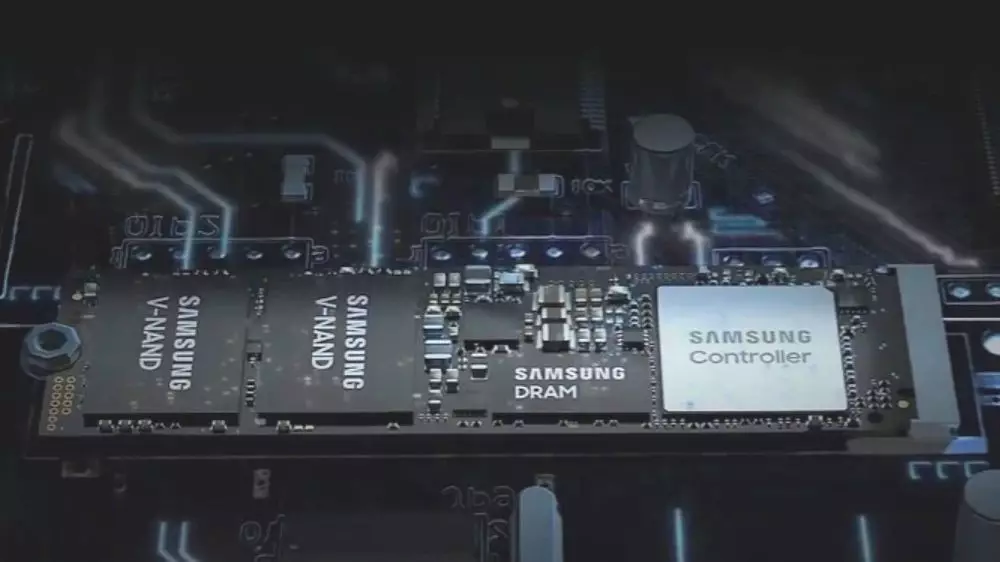The advent of PCIe 5.0 SSDs presents a pivotal shift in the landscape of storage technology, particularly in gaming and high-performance computing. Despite this potential, the widespread adoption of PCIe 5.0 SSDs has been relatively lagging, especially among PC gamers. However, with Samsung’s recent announcements regarding its new PM9E1 SSD, the tides may be turning. Let’s delve into the implications of this technological advancement and the challenges that still lie ahead.
Samsung’s PM9E1, according to reports by TechPowerUp, boasts remarkable specifications that push the boundaries of current SSD performance. With read speeds reaching up to 14.5 GB/s and write speeds at 13.5 GB/s, the PM9E1 promises to deliver a substantial improvement over its PCIe 4.0 counterparts; for instance, the existing PCIe 4.0 models typically max out at around 7 GB/s for reading and 5.1 GB/s for writing. This leap is not just incremental—it’s almost doubling the performance, which is a bold claim for Samsung as it launches its first serious contender in the PCIe 5.0 arena.
Notably, the PM9E1 stands out in a market where most high-end PCIe 5.0 SSDs currently offer maximum rates of approximately 12 GB/s read and 10 GB/s write speeds. Samsung’s emphasis on speed places it ahead of the competition, enabling it to potentially secure the title of having the fastest consumer SSD on the market, as even rivals like Crucial have not quite matched this level of performance.
While speed metrics are undoubtedly important, the underlying technology is critical for understanding why the PM9E1 SSD could be transformative. At the heart of this innovation lies Samsung’s new in-house 5 nm controller, which is touted to improve power efficiency by over 50%. This bodes well not just for desktop users but for those utilizing laptops and compact systems that demand high performance without excessive heat generation.
One of the significant hurdles for PCIe 5.0 SSDs has been their thermal management; many existing models require elaborate cooling mechanisms, making them less viable for mobile platforms. If Samsung can deliver a product that operates efficiently and coolly, it could redefine how SSDs are perceived in terms of integration with laptops and handheld devices. This much-needed balance between performance and power consumption is key to facilitating broader adoption across various computing segments.
Despite the impressive specifications and potential technological benefits offered by the PM9E1, challenges still remain before PCIe 5.0 SSDs become mainstream among everyday users. One of the primary concerns is pricing. High-performance components typically come with a premium, which might deter budget-conscious gamers and enthusiasts from upgrading to PCIe 5.0 drives. If Samsung’s new SSD is priced too steeply, it risks becoming a niche product rather than a ubiquitous solution for storage.
Moreover, while sequential read and write speeds make for sensational headlines, real-world performance in everyday tasks often hinges more on random read and write speeds. Current benchmarks reveal that improvements in these metrics for PCIe 5.0 SSDs are less pronounced. Users seeking noticeable enhancements in their gaming or computing experiences may not see the requisite performance gains, especially if their current hardware limits the benefits of upgraded storage.
Looking forward, the future of PCIe 5.0 SSDs appears promising, especially with emerging AMD and Intel platforms that fully support this next-generation technology. As compatible motherboards become more prevalent, the potential for widespread adoption increases. With x870 and rumored Z890 motherboards offering multiple Gen 5 SSD slots, users may soon be able to exploit the capabilities of these speedy drives.
Additionally, the advent of AI technologies and machine learning applications could further drive the demand for faster storage solutions. As applications require more intensive data transfer capabilities, SSDs like the PM9E1 may become essential for optimizing performance in next-generation computing environments.
While PCIe 5.0 SSDs may not be essential for gaming today, products like Samsung’s PM9E1 signal that we are on the cusp of a significant shift in storage technology. If challenges involving costs and real-world performance can be addressed, we may very well see a broader adoption of these drives in the very near future. Enthusiasts and gamers alike should remain vigilant, as advancements in SSD technology could soon lead to extraordinary changes in the computing landscape. Whether it’s gaming, content creation, or data-heavy operations, PCIe 5.0 SSDs may soon become the gold standard that rises to meet the demands of tomorrow’s technological innovations.

